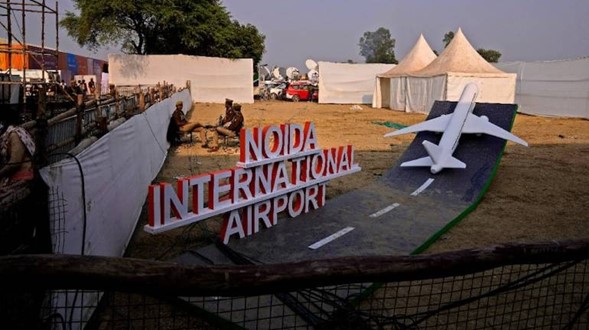The Chief Executive Officer of Noida International Airport, Christoph Schnellmann, announced on Wednesday that the International Air Transport Association (IATA) has assigned a unique three-letter code, 'DXN,' to the upcoming Noida International Greenfield Airport, currently under development in Jewar.
This three-letter code is essential for global location identification and is akin to a postal PIN code. It falls under the purview of IATA Resolution 763, which governs location code requirements, as explained by officials. For instance, Delhi's Indira Gandhi International Airport bears the code 'DEL.'
Schnellmann expressed his excitement, stating, "This three-letter code represents a significant milestone for Noida International Airport, and work on the project is progressing according to schedule." Officials underscored the importance of this unique code, as it facilitates standardized communication among aviation stakeholders, leading to smoother operations and reduced errors. It proves invaluable for various aspects of air travel, including ticket bookings, boarding passes, and baggage tag designations, according to officials.
Noida International Airport Limited (NIAL), the nodal body appointed by the Uttar Pradesh government to oversee airport progress, sees the acquisition of this three-letter code as a major leap forward. It paves the way for accelerating work on completing the project within the scheduled timeframe.
Arun Vir Singh, the CEO of NIAL and the Yamuna Expressway Industrial Development Authority (YEIDA), remarked, "We are thrilled to announce that IATA has bestowed upon Noida International Airport the international three-letter code 'DXN.' This recognition from the international airline trade body marks another significant milestone for the airport project."
Officials involved in the project's first phase have confirmed that the airport is on track to become operational before its target deadline of September 29, 2024.
Schnellmann provided an update on construction progress, stating, "We have already completed four floors of the air traffic control building, and the remaining two floors will be ready shortly." Interior work on the terminal building is set to commence in three months.
Upon completion of the first phase, the airport will cater to 12 million passengers annually, with plans to extend this capacity to 70 million passengers in phase four. The initial phase will feature a 3,900-meter runway with 28 aircraft stands and is expected to handle one lakh flights per year. Additionally, the planned passenger terminal will occupy an expansive one lakh square meters.






